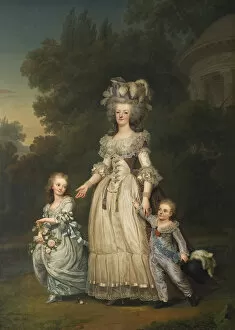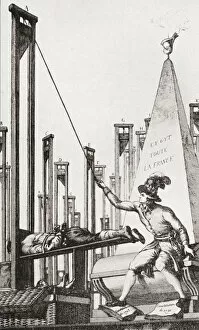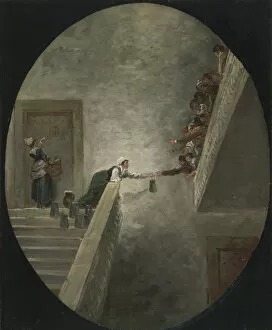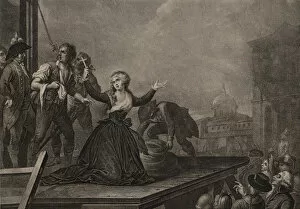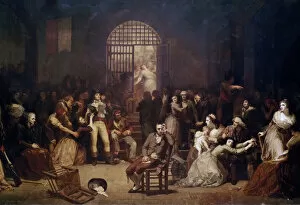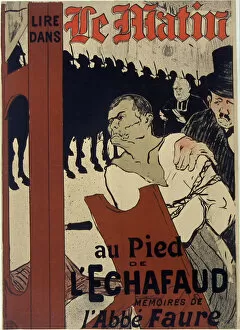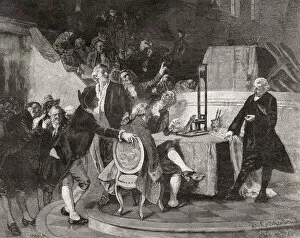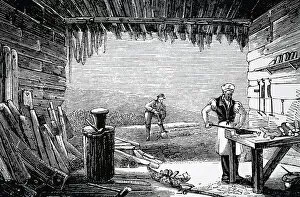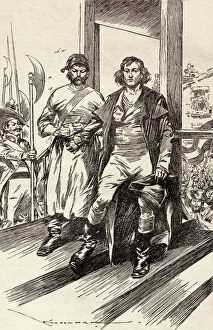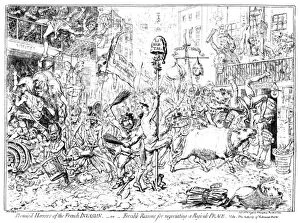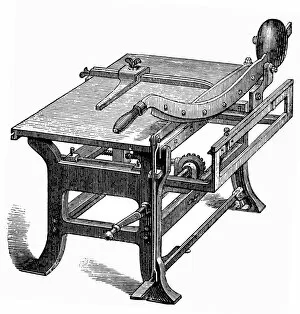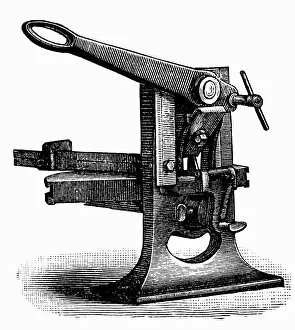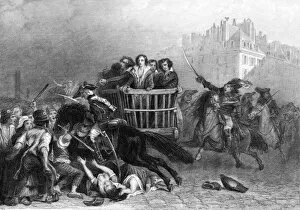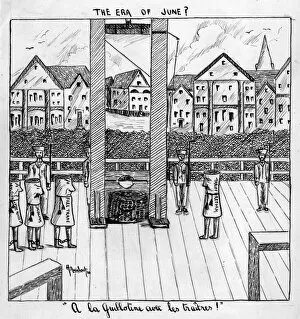Guillotine Collection (#8)
"From Christmas Crackers to the French Revolution
For sale as Licensed Images
Choose your image, Select your licence and Download the media
"From Christmas Crackers to the French Revolution: Unveiling the Dark History of the Guillotine" Step into a world where overtime at a Christmas cracker factory by William Heath Rob takes an unexpected turn, leading us down a chilling path towards one of history's most notorious inventions – the guillotine. Delaroche's haunting painting, "Guillotine. The Carmelites of Compiegne, " transports us back to the first half of the 19th century, where this macabre device played a central role in France's turbulent history. Intriguingly depicted in an American cartoon from 1798 on the XYZ Affair as "Cinque-Tetes or the Paris Monster, " we witness how five-man Directory ruling France demanded money at daggers point - quite literally. The execution of Louis XVI in Place de la Revolution on January 21st, 1793, captured in vivid detail during that era, reminds us of both its historical significance and gruesome nature. Even Louis XVI himself seemed resigned to his fate as he does his best to face what awaits him. But let's not forget that behind every dark tale lies credit due – Emma Peel discussing a model guillotine with our mysterious protagonist reveals just how deeply this invention has permeated popular culture. Charles Valaze, Marie Antoinette & Son, Jeanne-Marie Roland – names forever etched into history thanks to their unfortunate encounters with this fearsome contraption. A real depiction from Paris between 1791-1792 shows us just how tangible and terrifying this instrument truly was. Its presence loomed large over society during those tumultuous times. As we reflect upon these hints scattered throughout various artworks and historical accounts, it becomes clear that the guillotine holds more than mere fascination for morbid curiosities; it represents an indelible mark on humanity’s collective memory – reminding us never to forget the dark chapters of our past.

